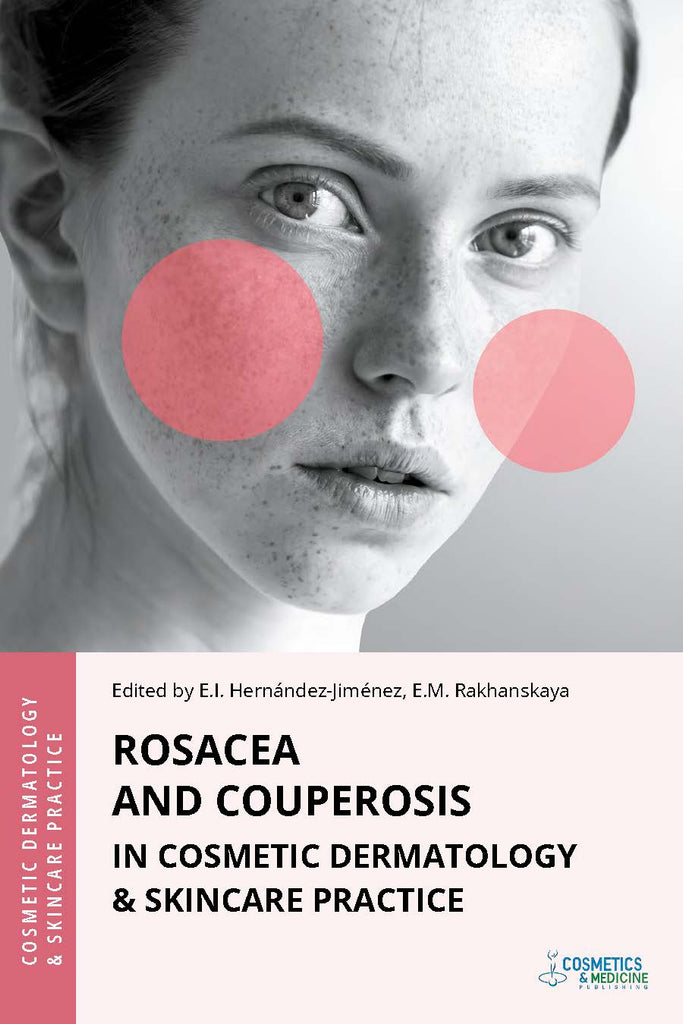- Publisher: Cosmetics & Medicine Publishing
- Format: eBook
- Pages: 134
- Language: English, Russian
- Publication date: January 5, 2024
- Product dimensions (WxHxD), cm: 15.24 x 22.86 x 0.78
- ISBN/ISSN: 978-1-970196-22-1 (paperback); 978-1-970196-44-3 (hardcover); 978-1-970196-08-5 (eBook – Adobe PDF); 978-1-970196-16-0 (eBook – ePUB)
Rosacea on average affects 5% of all people on Earth, and couperosis — a problem for a considerable number of fair-skinned people that catches up with them, if not in their youth, then as they age — is one of the symptoms of photoaging. Therefore, any specialist working with skin cannot avoid "encountering" these conditions.
However, even though rosacea was regarded exclusively as a dermatological problem for a long time, and couperosis was deemed virtually impossible to cope with, modern research and developments in the field of dermatology give specialists a variety of working tools to correct these unpleasant aesthetic defects.
The specialty of our book is that we look at cosmetic approaches that can help patients with rosacea and couperosis. We not only vouch that these approaches work but know from experience that cosmetic care can slow down the progression of these diseases. Thus, it not only saves patients from aggressive dermatologic treatment but also significantly improves their quality of life.
This publication will detail the current understanding of the etiology and pathogenesis of rosacea. We consider these facts important to know because recent research has dramatically changed the primary image of the disease and the treatment approaches. We now understand that what used to be considered a cure by dermatologists may sometimes worsen the skin condition of rosacea patients. We will thus examine in detail how to build a primary therapy based on these modern findings, what methods and products can be used, and what should be excluded from therapy and care programs offered to patients with rosacea.
The same applies to couperosis, as we will once again explain this condition and how it differs from rosacea, allowing specialists to apply the most effective therapy, particularly laser treatment. How do these methods work? How to prepare and protect the skin? Whether there is an effect from topical and injectable methods (and what kind of effect)? All these questions are discussed in detail in the relevant sections.
This book is a must-read for all specialists in aesthetic medicine, students pursuing degrees in dermatological specialties, and even patients who want to effectively resolve the problems of rosacea and couperosis.








